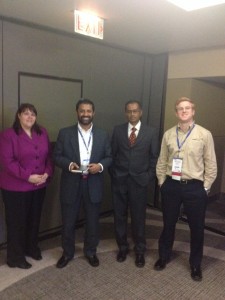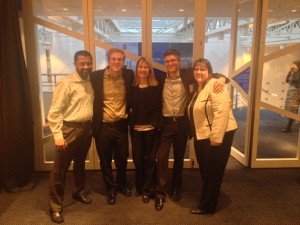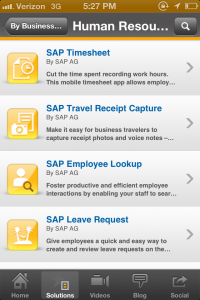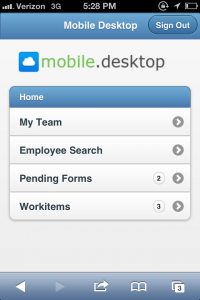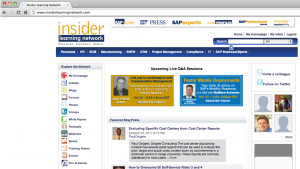
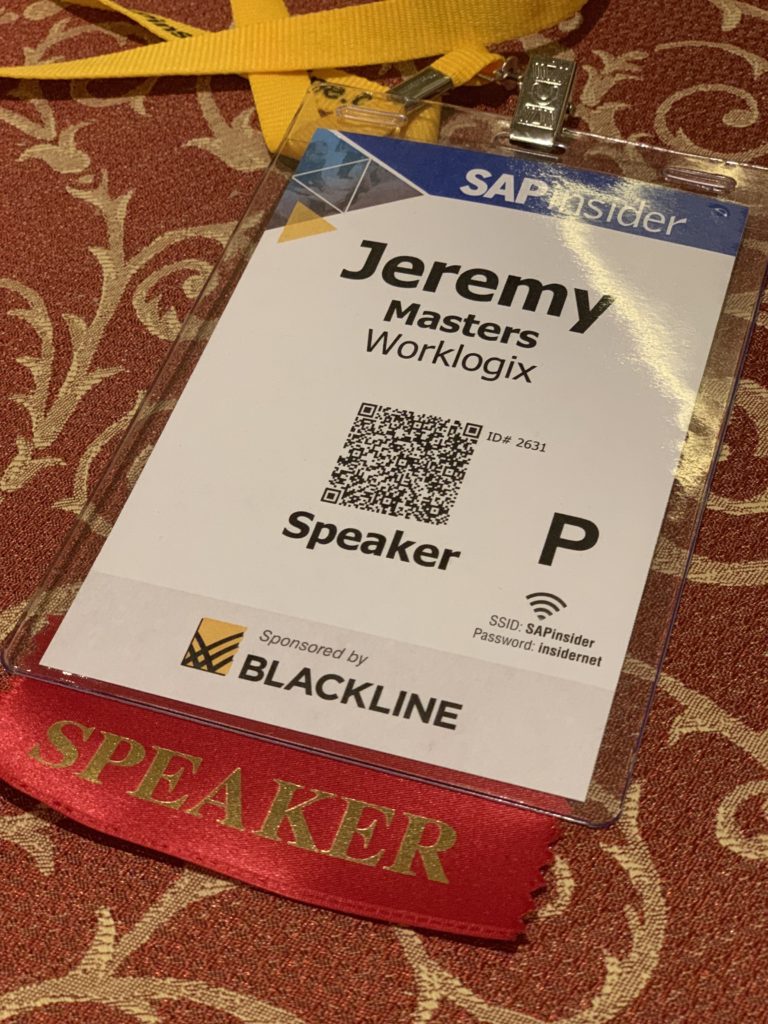
I was fortunate enough to attend and speak at HR Innovations 2019 last week in Las Vegas. I have attended and been a speaker at the SAPInsider shows since 2006 (gulp!). During the 2006 conference, I spoke on “Guidelines and Best Practices for Leveraging Standard SAP Functionality for Career and Succession Planning” and “Structural Authorizations 101: What You Need to Know”. Boy, that definitely seems like a lifetime ago.
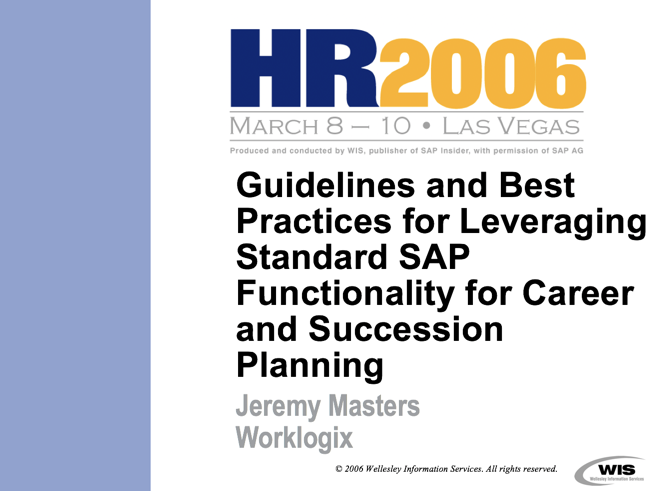
At this year’s event, I was able to participate in a panel (“The great debate – on premise vs cloud”), as well as five (5) sessions spread across only two (2) days. I spoke on building a cloud business case, managing change in a cloud environment (versus on premise), as well as Fiori and SAP SuccessFactors Performance Management. Yes, I definitely felt immersed in the event! A few reflections on the event in general:
SAP Insider looked and felt different than previous shows
SAPInsider made some nice updates to the event. I liked the shorter sessions (30-minute delivery with 10-minute Q&A) with more time for participants to go between sessions and network. The sessions were more consumable for the audience and the event just felt less rushed in general. There were also sessions in the exhibitor hall, and – although it was loud and distracting at times – overall, I think it added another nice twist to the sometimes-mundane breakout room. (Of course, this was an added bonus for the sponsors and exhibitors at the event as well due to extra traffic).
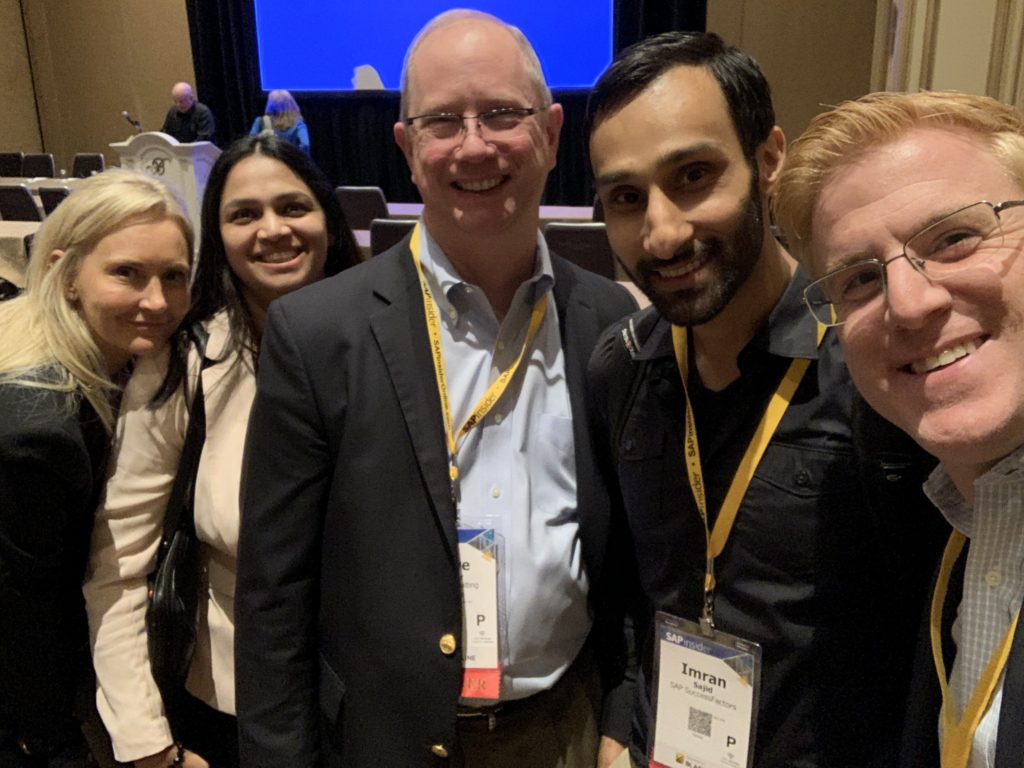
Customers are still worried about life in the cloud
HR Customers get it – the industry is pulling them (whether they like it or not) to the cloud. Most customers weren’t (at least) overtly pushing back but remain surprised at some of the harsh realities when entering a cloud environment (whether it be hybrid or full). In particular, the topic of upgrades came up at a few of my sessions. Customers who have SAP Payroll on premise, for example, were horrified to hear they would need to continue with their annual HRSP (HR Support Pack) upgrades, as well as the added quarterly releases from SuccessFactors. SuccessFactors recently (as of Q4 2018) added test scripts to their releases which put some at ease. Still others fretted it meant more work to spread across little to no available resources.
Yet, Customers understand the benefits of moving to the cloud
Customers understand the benefits of cloud software. The enhanced user experience and continuous innovation seem to be the two most obvious ones. Many of the 15,000+ on premise customers are stymied now since innovating on their current SAP HCM ERP offering may not be justified if a move to the cloud is imminent. The effect on the marketplace is a slow pace of change, and the industry has felt this the past few years. Regardless, customers still understand they need to get there- they’re just struggled how to do so.
On premise is on life support until at least 2030 now (until SAP changes it again).
Ralf Wagner (VP, Product Management) from SAP did a nice job explaining the new offering in 2023 for SAP customers not able to migrate to SAP SuccessFactors in the next few years. The offering is called “SAP Human Capital Management for SAP S/4 HANA on premise addition” (take a breath!). This offering basically means the customer has to “carve out” their existing SAP HR module and deploy on SAP HANA database. It will be based on an EhP8 and supplemented by some HANA-based capabilities. The will then be integrated with the S/4 HANA suite. SAP will develop migration tools to do this. Still TBD on what effort this would really look like.
One of my industry colleagues, Danielle Larocca, Senior Vice-President of HCM Solutions at EPI-USE Labs, created a post on this with additional details.
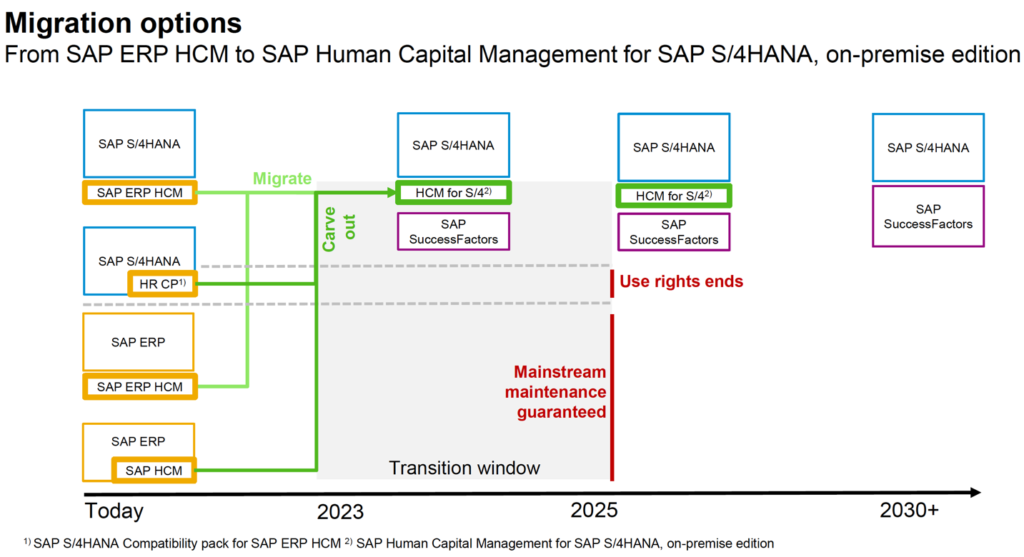
New podcast
Check out the podcast from Steve Bogner’s Insight Consulting Partners. I was a special guest and I had a fun time recording it with Steve and friends. Steve hasn’t posted yet, but I’ll update this post when he does.

Until next time…. I expect SAPInsider to continue having an HR show in 2020, and go back to simply calling it HR 2020. Here’s to hoping it will grow on the productive changes done this year.
Jeremy





